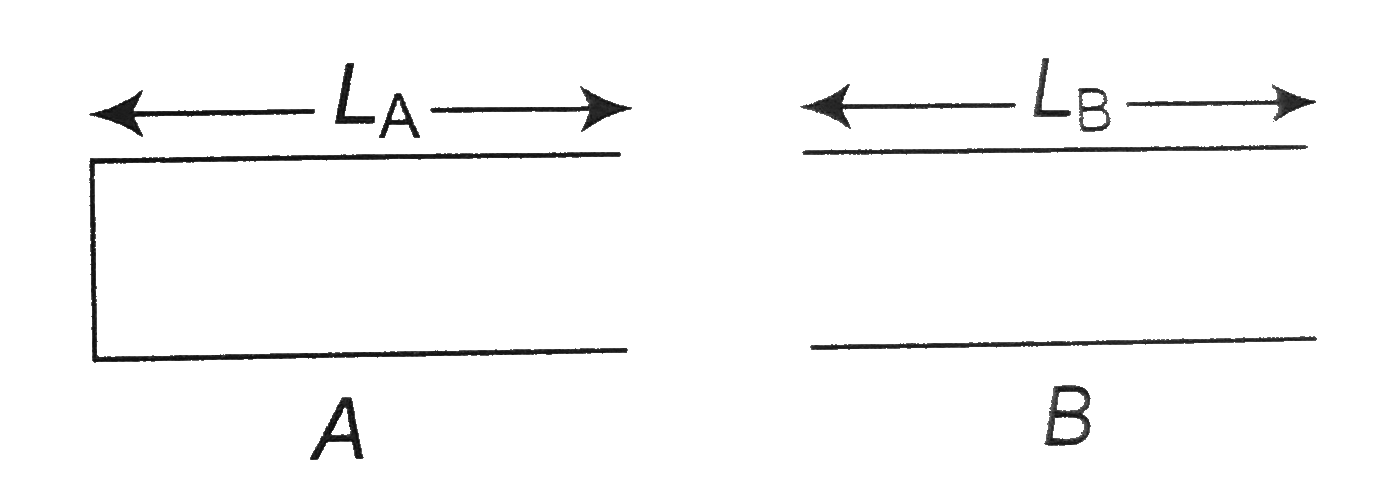Weak back-ground noise from a classroom set up the fundamental stationary wave in a card-board tube of length 80 cm with two open end. What frequency do you hear from the tube
(a) Ifyou jam your ear against one end ?
(b) If your move your ear away enough so that the tube has two open ends. Take v = 320 m/s.
The correct Answer is:A, B
Topper's Solved these Questions
- BOOK - PHYSICS GALAXY - ASHISH ARORACHAPTER - WAVES EXERCISE - Advance MCQs with One or More Options Correct30videos
WAVES
- BOOK - PHYSICS GALAXY - ASHISH ARORACHAPTER - WAVE OPTICSEXERCISE - Unsolved Numerical Problems28videos
WAVE OPTICS
- BOOK - PHYSICS GALAXY - ASHISH ARORACHAPTER - X-RAYSEXERCISE - Unsolved Numerica Problem for Preparation23videos
X-RAYS
Similar Questions
Weak back-ground noise from a classroom set up the fundamental stationary wave in a card-board tube of length 80 cm with two open end. What frequency do you hear from the tube
(b) If your move your ear away enough so that the tube has two open ends. Take v = 320 m/s.View SolutionWeak background noises from a room set up the fundamental standing wave in a cardboard tube of length L = 67.0 cm with two open ends. Assume that the speed of sound in the air within the tube is 343 m/s. (a) What frequency do you hear from the tube? (b) If you jam your ear against one end of the tube, what fundamental frequency do you hear from the tube?
View Solution
Knowledge Check
- Question 1 - Select One
A tube, open at only one end, is cut into two shorter (non equal) lengths. The piece that is open at both ends has a fundamental frequency of 425 Hz, while the piece open only at one end has a fundamental frequency of 675 Hz. What is the fundamental frequency of the original tube?
A127 HzB162 HzC209 HzD148 Hz

The two pipes are submerged in sea water, arranged as shown in figure. Pipe A with length LA=1.5m and one open end, contains a small sound source that sets up the standing wave with the second lowest resonant frequency of that pipe. Sound from pipe A sets up resonance in pipe B, which has both ends open. The resonance is at the second lowest resonant frequency of pipe B. The length of the pipe B isView SolutionA tube open at only one end is cut into two tubes of non equal lengths. The piece open at both ends has of fundamenal frequency of 450Hz and other has fundamental frequency of 675Hz. What is the 1st overtone frequency of the original tube.
View SolutionA tube open at only one end is cut into two tubes of non equal lengths. The piece open at both ends has of fundamenal frequency of 450Hz and other has fundamental frequency of 675Hz. What is the 1st overtone frequency of the original tube.
View SolutionA tube open at both ends has length 47 cm. Calculate the fundamental frequency of air column. ( Neglect end correction. Speed of sound in air 3.3×102 m/s ) .
View SolutionA cylinderical tube, open at one end and closed at the other, is in acoustic unison (resonance) with an external source of sound of singal frequency held at the open end of the tube, in its fundamental note.
Then :
A. the displacement wave from the source gets reflected with a phase change of π at the closed end
B. the pressrue wave from the source get reflected without a phase change at the closed end
C. the wave reflected from the closed and again gets reflected at the open end
D. the wave reflected from the closed end does not suffer reflection at the open endView SolutionA tube of a certain diameter and of length 48cm is open at both ends. Its fundamental frequency is found to be 320Hz. The velocity of sound in air is 320m/sec. Estimate the diameter of the tube.
One end of the tube is now closed. Calculate the lowest frequency of resonance for the tube.View SolutionA tube of a certain diameter and of length 48cm is open at both ends. Its fundamental frequency is found to be 320Hz. The velocity of sound in air is 320m/sec. Estimate the diameter of the tube.
One end of the tube is now closed. Calculate the lowest frequrncy of resonance for the tube.View Solution

